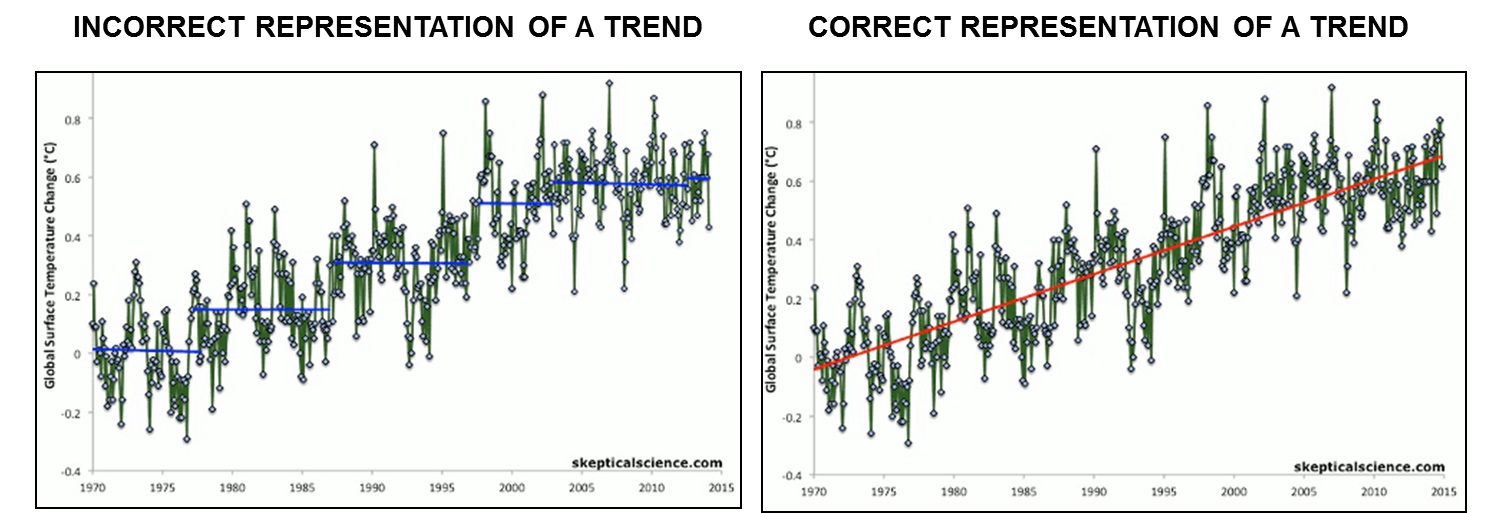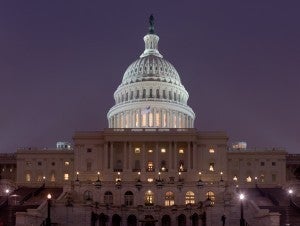
Supreme Court of the United States
Last night’s Supreme Court’s decision to temporarily stay implementation of the Clean Power Plan was unexpected, and the ruling is, as counsel for one of the lead challengers acknowledged, “unprecedented.” Indeed, the Supreme Court itself found in a landmark 2011 case that the Clean Air Act “speaks directly” to carbon pollution from existing power plants.
The D.C. Circuit is now carefully reviewing the merits of the case on an expedited basis and has not concluded its review – but across America, states and leading companies know that we must reduce climate-destabilizing pollution from the power sector, and the Court’s actions will not slow down America’s race to protect our communities, our children and our economic well-being.
That race is driven by developments far broader and deeper than a temporary setback in litigation. There is every reason for our nation to work together to prepare for, and meet, pollution reduction requirements under America’s Clean Power Plan.
Across the country, low-carbon, low-cost energy resources are already coming online at historic rates. We’re cleaning up the soot and smog emissions from our power system, and providing healthier longer lives and cleaner power for millions of Americans. Numerous states and leading power companies have been pursuing a flexible system-wide approach to cutting carbon emissions for years, harnessing opportunities to save money, reduce air pollution, and build our clean energy economy. America’s race to cleaner power is moving full steam ahead.
As for the Clean Power Plan – safeguards that are supported by millions of Americans – the Supreme Court’s February 9th stay order is far from the final word. As a number of state attorneys general, leading power companies, state air pollution control officials, and legal experts have recognized, the Clean Power Plan rests on a solid legal foundation and is anchored in a rigorous technical record.
We believe that when the court examines the merits in light of the extensive, compelling technical record supporting the Clean Power Plan, with full briefing and oral argument –- a review it did not conduct before issuing the February 9th order – it will uphold these critical protections for climate and public health, and they will go into effect as scheduled in 2022.
In the meantime, America will make sure it is ready by continuing to make progress in cutting dangerous carbon pollution — bringing more than 100 GW of new wind, solar, and other renewable generation online in the next six years, and offsetting generation from more than 80 coal-fired power plants — all while forging economic prosperity.
Clean Energy Is Powering America Today
The transition to secure cleaner, low-carbon power is already well underway. In total, natural gas and clean power such as wind and solar have accounted for 94 percent of all new generation since 2000. In recent years, these trends have been tipping more and more in favor of zero-carbon clean power, offsetting more and more carbon pollution. Indeed, market experts project that zero-carbon generation will account for more than 75 percent of new generation in 2016.
Behind these trends has been a steady decline in the cost of low- and zero-carbon electricity generating resources. Perhaps the most staggering changes are to be found in the solar industry, where prices have been falling for decades as the industry has matured, in part due to sustained investments here in the United States and abroad.
Since 2007 alone, the price of solar photovoltaic (PV) modules has fallen by more than 80 percent, and many industry analysts are projecting that these declines will continue. Meanwhile, sustained improvements in wind technology continue to reduce costs and increase capacity factors, while expanding opportunities across the nation
The very recent extension of the federal tax credits for renewables will be a further catalyst for zero carbon generation.
This new development will contribute to an expected wave of more than 100 GW of new renewables added to the grid between 2016 and 2021, which would offset generation from more than 80 coal-fired power plants. Power companies and state policymakers are recognizing and seizing the tremendous economic opportunity to secure these clean least-cost investments that will position their grid and their customers well to achieve vital reductions of carbon pollution.
America Has A Strong Time Tested History of Making Continuous Progress to Cut Dangerous Pollution from Power Plants While Growing Our Economy
America has long made continuous progress in reducing emissions from the power sector, while maintaining a low-cost and reliable electricity supply. Mercury levels in fish — the source of serious health risks, particularly for children — have been cut substantially in recent years as toxic emissions from power plants have declined. The Environmental Protection Agency’s (EPA) recent program to address cross-state air pollution will reduce soot- and smog-forming sulfur dioxide emissions by 73 percent and nitrogen oxide emissions by 54 percent from power plants in the eastern half of the U.S.
A separate standard will dramatically reduce mercury and other hazardous emissions from power plants, while also reducing soot-forming emissions by nearly twenty percent. At the same time, the Supreme Court’s recent decision to remove market barriers to certain energy efficiency programs unleashes a powerful opportunity to build a power system that avoids emissions in the first place.
These pollution reductions have tremendous benefits for our communities — they are saving lives, protecting children from asthma attacks, improving public health and fostering the transition to fundamentally cleaner, safer power. At the same time, this progress is driving widespread interest in pollution-free electricity generation solutions that avoid pollution and also protect our climate. America is already moving to cleaner, safer power to safeguard our communities from climate change and the array of harmful pollution discharged from aging, high emitting fossil fuel power plants
The Clean Power Plan Is Firmly Grounded in Law and Science
The Clean Power Plan has a firm anchor in our nation’s clean air laws and a strong scientific record.
The Supreme Court has affirmed three times that the Clean Air Act authorizes EPA to address climate-destabilizing carbon pollution. In 2011, the Court affirmed that section 111(d) of the Clean Air Act –- the provision that underlies the Clean Power Plan — “speaks directly” to emissions of carbon pollution from existing power plants.
Indeed, the Supreme Court unanimously held that states harmed by climate change must look to EPA for protection rather than to common law remedies developed by federal courts. The Clean Power Plan is wholly consistent with the language of the Clean Air Act, and builds upon approaches that have been employed in other judicially-upheld Clean Air Act rules addressing the power sector.
Moreover, the Clean Power Plan rests on a rigorous, extensive technical record informed by nearly two years of public consultation, more than four million public comments, and multiple public hearings touching on nearly every aspect of the standards. Numerous key features were adopted specifically in response to comments by industry and the states on grid reliability, cost, and other issues.
The Clean Power Plan takes a flexible, cost-effective approach to addressing carbon pollution from the electricity sector — well in accord with the Supreme Court’s recognition, just last week in another major case, that the modern power system functions as “an interconnected grid of near-nationwide scope.”
A diverse coalition has joined with EPA to vigorously defend these historic safeguards in court. Eighteen states, the District of Columbia, numerous leading power companies, clean technology companies, and public health and environmental organizations have all partnered to vigorously defend the Clean Power Plan’s solid legal foundation. Twenty major municipalities across the country, from Houston to Grand Rapids and South Miami, are supporting the Clean Power Plan in court.
Moreover, a number of legal experts, law enforcement officials, and former regulators — including two former Republican Administrators of the EPA who are supporting the Clean Power Plan in the D.C. Circuit — have recognized that the Clean Power Plan is fully consistent with the Clean Air Act and represents a common-sense, cost-effective approach to pollution reduction.
Several of our nation’s most important clean air and clean energy safeguards have undergone legal wrangling before taking effect, such as the life-saving limits on smokestack pollution discharged cross-state to downwind communities, and the decision less than two weeks ago in which the Supreme Court fundamentally affirmed important clean energy provisions after damaging legal setbacks.
We are confident that the Clean Power Plan will prevail when considered based on a careful review of the merits, in light of the compelling technical record it is founded on — a review the Supreme Court did not undertake in issuing its February 9th stay order.
In the meantime, the race is on to secure a clean energy future, as many states and power companies have already been doing over the last several years. Nothing in the Supreme Court’s decision alters the imperative to reduce emissions of climate-altering pollution, and capture the economic benefits of near-term investments in clean power and energy efficiency.
And there is every reason for our nation to work together to prepare for and meet pollution reduction requirements under America’s Clean Power Plan — emissions reductions that take effect by 2022, long after any legal wrangling will be complete.
States Are Investing in Cleaner Power
All of these trends are already driving major reductions in carbon pollution. Carbon dioxide emissions from the US power sector hit a 27-year low last April, the lowest amount for any month since April 1988. Overall, the power sector has already reduced emissions of carbon pollution to 15 percent below 2005 levels, and a number of states have achieved even deeper cuts in recent years. From 2005 to 2012 alone, 16 states reduced carbon dioxide emissions from the power sector by at least 25 percent, and nine states actually reduced emissions by more than 40 percent.
These trends are intersecting with a period of dramatic transformation in the electricity grid. Power companies are expected to invest an estimated $2 trillion in new generation, transmission, and distribution infrastructure between 2010 and 2030 in order to modernize aging generating facilities and grid systems.
Smart states and power companies will continue to take this opportunity to make forward-looking investments that harness our dynamic clean energy economy, cut carbon pollution, and avoid the risk that comes from doubling-down on outdated, dirty technologies that will become stranded in the near future.
America is securing healthier air, a safer climate, and a more resilient and affordable electricity grid — all while growing our economy. All evidence points to this race only accelerating and states and companies achieving and exceeding our nation’s targets for reducing destabilizing carbon pollution. And that’s great news for our public health, our climate security and our economy.
















 Seven months ago, I made a
Seven months ago, I made a